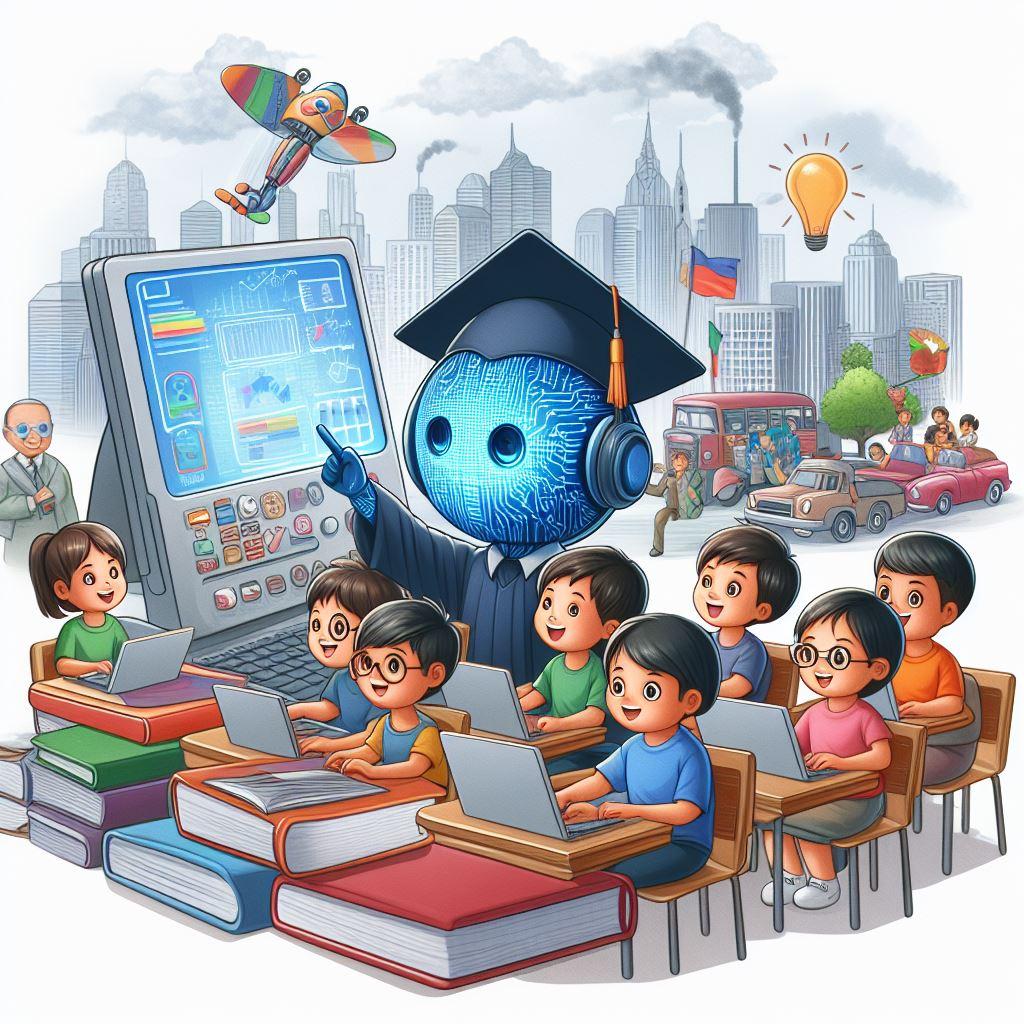How AI is Transforming Global Education Through Personalised Learning
Artificial Intelligence (AI) is rapidly reshaping every industry, and education is no exception. The traditional model of one-size-fits-all learning is being replaced by personalized approaches, powered by AI technology. In this article, we explore the profound impact of AI in global education, with a focus on personalised learning, it’s benefits, real-world examples, and actionable insights for educators, institutions, and learners.
Introduction: The Rise of AI in Education
As educational needs evolve and the demand for student-centric approaches grows, AI-powered personalized learning is emerging as a transformative solution. From adaptive assessments to intelligent tutoring systems,AI is enabling educators to tailor learning experiences to each student’s unique strengths,weaknesses,and interests—regardless of geography or resources.
- Keywords: AI in education, personalised learning, adaptive education technology, global education, artificial intelligence, edtech innovations, classroom transformation.
How AI Facilitates Personalised Learning
Personalised learning involves customizing educational content, pace, and method for individual learners. AI acts as a catalyst by analyzing vast amounts of data to identify patterns and forecast student performance.Here is how AI is making waves in personalised learning:
1. Adaptive Learning Platforms
- Real-time assessment: Modern platforms use algorithms to track student progress and adjust lessons accordingly.
- Content recommendation: AI suggests resources (videos, articles, exercises) tailored to a student’s current abilities and interests.
2. Intelligent Tutoring Systems
- Immediate feedback: AI-powered tutors provide instant feedback and hints, enabling students to learn from mistakes.
- 24/7 accessibility: These systems bridge gaps caused by teacher shortages, offering support any time.
3. Natural Language Processing (NLP)
- Language learning: NLP-based apps help improve grammar, vocabulary, and writing skills in multiple languages.
- Automated essay grading: AI evaluates written assignments, giving teachers more time to focus on classroom engagement.
4. Predictive analytics for Student Success
- AI scans academic records, engagement data, and even social-emotional cues to predict risk factors and intervene proactively.
- Schools use these insights to create support strategies, improving retention and academic achievement.
Benefits of AI-Driven Personalised Learning in Global Education
The integration of AI in education yields manifold benefits for students, teachers, and educational institutions worldwide:
- Enhanced Engagement: Tailored content keeps students motivated and interested, reducing the likelihood of dropout.
- Equitable Access: AI-powered platforms can reach underserved populations, bridging gaps in resources and expertise.
- Scalable Solutions: technology enables personalized learning at scale—crucial for large classrooms and remote learners.
- Efficient Administrative Processes: Automating grading, scheduling, and content delivery frees educators to focus on teaching.
- Data-Driven Insights: Teachers and administrators get actionable details to optimize curricula and interventions.
Case Studies: AI Transforming Education Worldwide
1. Squirrel AI (China)
Squirrel AI uses machine learning to create customized learning paths for millions of students, analyzing thousands of data points per student. the system identifies conceptual gaps and provides targeted exercises,boosting average test scores and teacher effectiveness.
2. Carnegie Learning (United States)
Carnegie Learning’s MATHia platform leverages AI to analyze student problem-solving behavior in real time. by providing individualized feedback and hints, the tool promotes deeper understanding of mathematical concepts.
3. Century Tech (United Kingdom)
Century Tech uses AI to deliver adaptive micro-lessons. Its dashboard enables teachers to monitor progress and intervene early. The platform empowers learners in over 40 countries, demonstrating that AI can transcend borders and languages.
4. Firsthand Experience: A Teacher’s Perspective
“Sence incorporating AI-driven platforms, I’ve seen students become more independent and motivated. Struggling learners receive extra support automatically, allowing me to focus my attention where it’s needed most.”
— Maria, Middle School Teacher, Brazil
Practical Tips for Implementing AI in the Classroom
For educators and institutions considering the adoption of AI-based learning technologies, here are practical steps to maximize benefits:
- Start Small: Pilot AI tools in select subjects or groups to gather feedback and measure impact.
- Train Educators: Provide professional advancement to help teachers integrate AI and use data insights effectively.
- Protect Student privacy: Ensure GDPR and local regulations are met when collecting and using student data.
- Foster Inclusivity: Involve parents and students in discussions about technology adoption, addressing concerns and expectations.
- Monitor Progress: Use analytics dashboards to track learner outcomes and adjust strategies as needed.
Challenges of AI in Education and Potential Solutions
While AI-powered education offers vast opportunities, there are hurdles to navigate:
- Digital Divide: Many regions lack reliable internet or devices. Solution: Support government and NGO programs to increase access.
- Bias in Algorithms: AI systems can inadvertently reinforce social or cultural biases. Solution: Use diverse datasets and conduct regular audits.
- Teacher Readiness: Not all educators are comfortable with tech. Solution: Prioritize practical training and ongoing support.
Future Trends: What’s Next for AI and Personalised Learning?
The evolution of AI in global education is accelerating, and here’s what the future may hold:
- Edutainment: Merging AI with gamified and immersive content for enhanced motivation and learning outcomes.
- Worldwide Language translation: Breaking language barriers with AI-powered translation and speech recognition tools.
- Emotion AI: Using affective technology to better understand student engagement and tailor interventions.
- Cross-platform Learning: Seamless integration of AI tools across devices—PCs, tablets, AR/VR headsets.
Conclusion: Embracing the Power of AI in Global Education
Artificial Intelligence is revolutionizing how knowledge is delivered,consumed,and assessed. Personalised learning powered by AI is unlocking opportunities for students and educators everywhere, making education more equitable, engaging, and effective. By leveraging adaptive learning technologies, predictive analytics, and intelligent tutoring systems, we can realize a future where every learner’s potential is fully maximized.
As we move forward,a thoughtful approach to implementation—alongside commitment to privacy,inclusivity,and continuous betterment—will ensure that AI-driven education truly empowers learners across the globe.
Ready to transform your classroom? Explore the latest AI-powered educational tools and join the future of personalised learning today!

